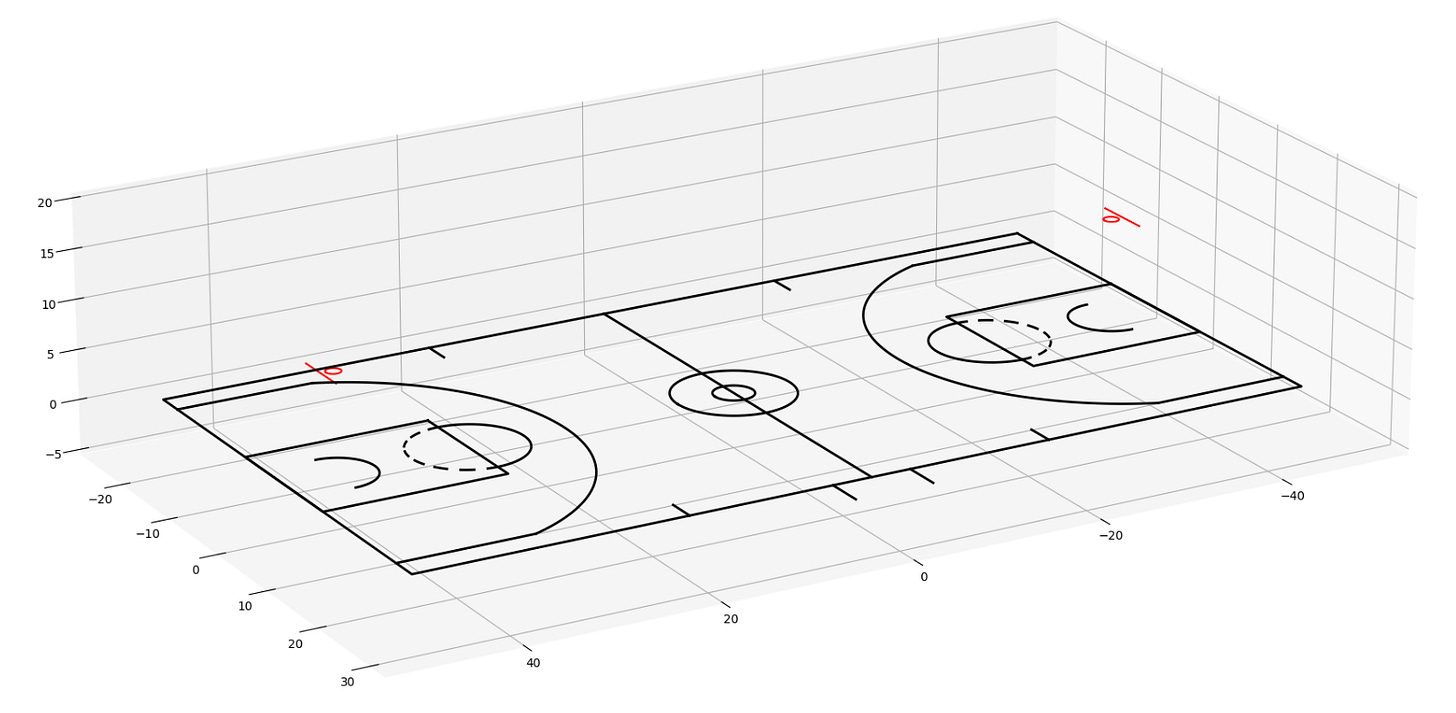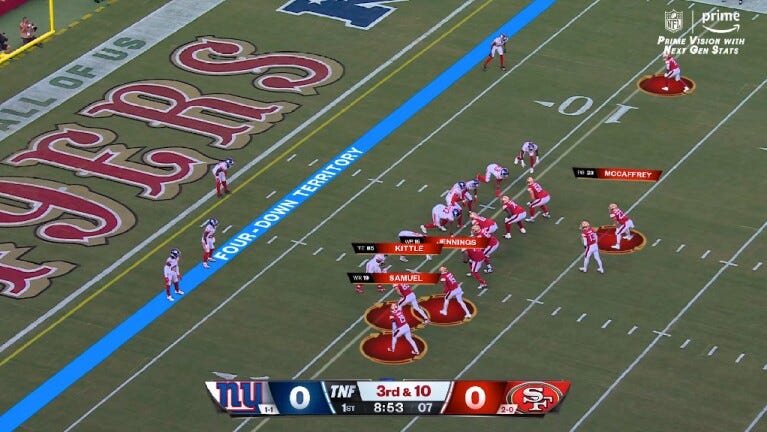Open Source 3D Motion Capture Basketball Data, Court Visualizations, and Taking the TNF Fan Experience to the Next Level
Check out what's happening in the intersection of sports and data analytics in this week's Data Points of the Week
Introducing 𝗦𝗣𝗟-𝗢𝗽𝗲𝗻-𝗗𝗮𝘁𝗮
As play-by-play data sources are increasingly in demand, biomechanics data is an area that is less explored in the space but offers significant insights to athletes and coaches. Think of the 100 MPH MLB pitchers, NBA sharp shooters from beyond the arc, and the PGA Tour’s Strokes Gained: Driving leaders; these top athletes set themselves apart with their biomechanics. This is a significant facet of all top-performing athletes, but because of the lack of data availability, many data enthusiasts may not have experience with it.
As recently announced by Rob Mackowiak on X, the MLSE’s Sports Performance Lab has started SPL Open Data, a publicly available repository of biomechanics data released for the advancement in sports biomechanics research and development. The group’s first release, now available through GitHub, includes 3D motion capture data from 125 basketball free throws. In addition to shot metadata, motion capture data tracks the player movements and basketball dynamics as part of the final data set.
Motion capture is eventually going to be used to train the next wave of athletes, so getting access to high quality data will be beneficial for future work! We will continue to stay updated on this initiative and report new data through the repository as it becomes available.
mplbasketball for advanced basketball plotting in Python
Also announced this week by the MSLE SPL is mplbasketball, a newly developed Python package for basketball data plotting. The package offers 2D and 3D visualization options conducive to NBA, WNBA, and NCAA play-by-play data.
The package documentation is coming soon, but for now, follow along with the GitHub vignette to see functions usage examples and expected data structures!
Amazon integrates “AI-powered features” into Thursday Night Football broadcast
Entering their third season as the Thursday Night Football (TNF) broadcaster, Amazon has unveiled a new series of “AI-powered features” to be integrated into their weekly NFL streams. Among the latest advancements are Defensive Vulnerability, Pressure Alert, and Coverage ID. Defensive Vulnerability uses real-time tracking data paired with a machine learning model to predict a pre-snap coverage deficiency, producing an area in the coverage where the offence can attack. Pressure Alert provides a pressure likelihood for defensive players, using pre-snap positioning and historical data to predict which players are likely to pressure the quarterback. Lastly, Coverage ID provides a projection of the defensive scheme and alerts viewers of man or zone defence before the snap.
Implementing AI features for NFL broadcasts isn’t something new for Amazon; the company began this initiative when they started their TNF hosting duties in the 2022 season. Previous features included: Prime Targets, highlighting wide receivers likely to be open; Field Goal Target Zones, estimated ranges for kickers is crucial moments; and Rapid Recap, offering quick highlight bundles for viewers who join the game in-progress.
This refreshed list of AI-powered features for the 2024 season sounds fascinating from both a data and entertainment perspective. Obviously, having access to top-level data science resources and AWS computing is nice, but it also puts Amazon in a unique position within the broadcasting world. There are likely no traditional sports broadcasters who are currently capable of implementing such (a) technology, let alone integrating it seamlessly into a live broadcast! If Amazon can be successful with TNF over the next few seasons, we may see serious downstream changes from other networks working with the NFL in an effort to keep up with this forward-thinking initiative.





